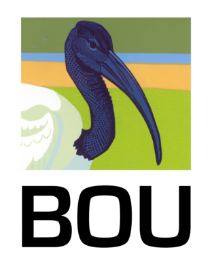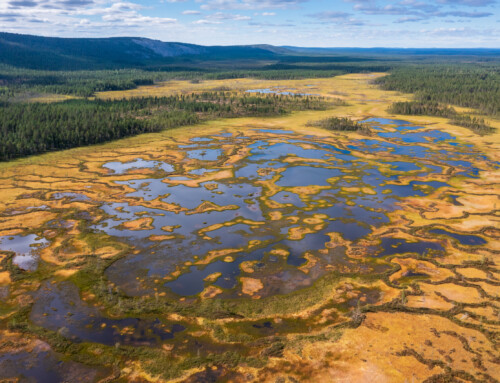
The Tropical Dry Forest (TDF) of Mesoamerica is recognized for its high species richness, elevated levels of endemism, and remarkable ecological specialization (Ríos-Muñoz & Navarro-Sigüenza, 2012; Prieto-Torres et al., 2019). In Mexico, this ecosystem is distributed relatively continuously along the Pacific slope, yet it exhibits marked variation in precipitation and temperature regimes (Malpica, Mendoza-Cuenca & González, 2022). Such climatic heterogeneity may impose selective pressures on populations, favouring local adaptation processes that generate genetic gradients across species’ ranges.
Despite its ecological value, the TDF is one of the most threatened ecosystems worldwide, facing pressures from both human disturbance and climate change (Miles et al., 2006; Prieto-Torres, Lira-Noriega & Navarro-Sigüenza, 2020). This raises a central question: can endemic species adapt rapidly enough to cope with shifting environmental conditions? Supported by a BOU Ornithological Research grant, we set out to address this question using the Happy Wren (Pheugopedius felix), an endemic bird of the Mexican dry forest, as a study model. Our aim was to detect genomic signals of local adaptation and assess the vulnerability of P. felix populations under future climate scenarios.
From May 2024 to March 2025, we conducted fieldwork across much of P. felix’s distribution. Using mist nets, we captured 100 birds at 22 localities spanning from northern Sonora to southern Oaxaca (Figure 1). We collected blood samples and extracted DNA from these individuals for analysis. The data gathered would allow us to characterize genetic structure and diversity across the species’ distribution, identify outlier loci as potential indicators of adaptation, and examine the relative roles of isolation by distance and isolation by environment in shaping genetic differentiation. This field-genomic combined approach provides a first step towards detecting signals of local adaptation and identifying populations that might be at greater risk under climate change.
 Figure 1. Sampling localities of Pheugopedius felix. Green dots indicate sampling sites, while red asterisks correspond to samples obtained during an additional field trip and recent donations from UNAM and Burke Museums. Colored lines (blue, green, and pink) represent the three main genetic clusters (K = 3) identified by ADMIXTURE.
Figure 1. Sampling localities of Pheugopedius felix. Green dots indicate sampling sites, while red asterisks correspond to samples obtained during an additional field trip and recent donations from UNAM and Burke Museums. Colored lines (blue, green, and pink) represent the three main genetic clusters (K = 3) identified by ADMIXTURE.
Although preliminary, our findings suggest that P. felix exhibits strong genetic structure shaped by both spatial isolation and environmental pressures. Despite the apparent continuity of the TDF along the Pacific slope, we found evidence of strong genetic structure, with three main genetic clusters (Figure 2). The Central group exhibited the highest levels of diversity, the North group exhibited the lowest diversity, and the South group showed intermediate diversity. Results also suggest a general deficit of heterozygotes, suggesting substructuring of populations or limited dispersal (note: results not shown).
 Figure 2. Individual assignment probabilities of P. felix to genetic clusters inferred in ADMIXTURE. Each vertical bar corresponds to one individual, with colors indicating proportional membership to genetic groups for K = 3 (optimal value), followed by K = 4 and K = 5.
Figure 2. Individual assignment probabilities of P. felix to genetic clusters inferred in ADMIXTURE. Each vertical bar corresponds to one individual, with colors indicating proportional membership to genetic groups for K = 3 (optimal value), followed by K = 4 and K = 5.
The unequal distribution of genetic diversity, particularly the reduced variation in Northern populations, indicates that some populations may face greater challenges adapting to future climate conditions.
Challenges and Lessons Learnt
Conducting research across such an extensive and diverse ecosystem posed logistical challenges, from accessibility to security concerns. Nevertheless, collaborations expanded our dataset significantly. Tissue donations from the Burke Museum and UNAM included insular populations from the Tres Marías Islands (P. f. lawrencii) and southern populations, both critical to capturing the species’ full genetic breadth. Additional funding from the Universidad Michoacana enabled further sampling in the Balsas River Basin, a historically underrepresented region. Integrating these samples will be essential for completing the genetic characterisation of the species and advancing toward our main objectives.
An undergraduate student (Jorge Valencia Galván) also contributed to the project by analysing mitochondrial markers and generating independent preliminary results, which he presented at a national ornithological congress (XXI CECAM, Mexico), highlighting the academic and formative value of this project.
Our next steps will include sequencing data from recently collected and donated samples, as well as performing genomic vulnerability analyses to identify populations at greatest risk under future climate change.
 Figure 3. Author collecting data using mist nets.
Figure 3. Author collecting data using mist nets.
Funding
In 2024, Andreia was awarded an Ornithological Research grant of £2000 for a project titled “Searching for genome-environment association signals that suggest patterns of local adaptation in an endemic bird of the Tropical Dry Forest of Mexico: perspectives for conservation in the face of climate change” when she was a postdoctoral researcher at Universidad Michoacana de San Nicolás de Hidalgo, Mexico under Clementina Gonzalez Supervision (PI).
References
Ríos-Muñoz, C.A. & Navarro-Sigüenza, A.G. 2012. Patterns of species richness and biogeographic regionalization of the avifaunas of the seasonally dry tropical forest in Mesoamerica. Studies on Neotropical Fauna and Environment, 47: 171–182.
Prieto-Torres, D.A., Rojas-Soto, O.R., Santiago-Alarcón, D., et al. 2019. Diversity, endemism, species turnover and relationships among avifauna of Neotropical seasonally dry forests. Ardeola, 66(2): 257–277.
Malpica, A., Mendoza-Cuenca, L. & González, C. 2022. Color and morphological differentiation in the Sinaloa Wren (Thryophilus sinaloa) in the tropical dry forests of Mexico: the role of environment and geographic isolation. PLoS ONE, 17(6): e0269860.
Miles, L., Newton, A.C., DeFries, R.S., Ravilious, C., May, I., Blyth, S., et al. 2006. A global overview of the conservation status of tropical dry forests. Journal of Biogeography, 33: 491–505.
Prieto-Torres, D.A., Lira-Noriega, A. & Navarro-Sigüenza, A.G. 2020. Climate change promotes species loss and uneven modification of richness patterns in the avifauna associated with Neotropical seasonally dry forests. Perspectives in Ecology and Conservation, 18(1): 19–30.
Image credit
All images were taken by © Andreia Malpica.





